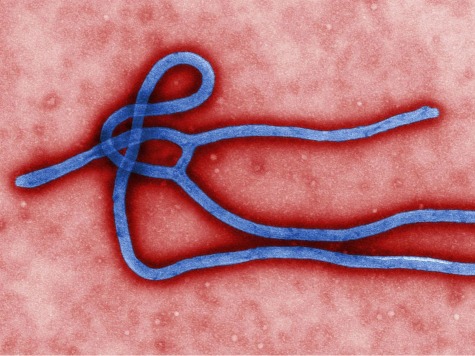
A walking robot named Gigi is being used in hospitals around the country to sanitize rooms used by carriers of infectious diseases. In the wake of the arrival of Ebola to the United States, the Texas hospital affected has been using the robot’s radiation powers to kill the virus wherever it may live.
CNN reports that the machine, a boxy contraption with wheels that walks itself around, has been in use for some time at Texas Health Presbyterian Hospital to clean hospital rooms after their patients have left. The robot uses ultraviolent radiation to kill any bacteria or viruses that may be living on the surfaces of the room. Once in use, the article explains, “Gigi begins popping and blasting ultraviolet light that’s 25,000 times more powerful than sunlight in killing contagion.” It takes between 5-10 minutes for the microorganisms to be so badly damaged that they die.
Texas Health Presbyterian Hospital in Dallas currently possesses two models of Gigi, which was also developed in the state. The robot was used to sanitize the room of Thomas Eric Duncan, a Liberian man who died of Ebola in Dallas after becoming the first person to receive a positive diagnosis for Ebola in the United States.
Gigi is believed to be able to disinfect a room up to 99.9%, Dr. Ray Casciari, who works at St. Joseph Hospital of Orange, told CNN. The robot has been in use for months elsewhere, with Casciari himself facilitating the purchase of a Gigi unit in the Orange County, California hospital. According to an article on Gigi’s use there in May, the robot found most use in surgical rooms, where the attempts to keep patients away from potential infections were greatly enhanced by the use of the robot. Said Dr. Casciari then:
What we found was that it’s extremely difficult to clean a modern hospital room. You have things like keyboards, curtains, surfaces that are hard to get to, complicated devices in ORs and patient rooms… While it is possible to clean with infrared, the device and the room heat up, which means you need time for the device to cool down. With Xenex you don’t need to wait, so we can operate it 24/7, and we have a lot of rooms to clean, so it is important for us.
There have been three confirmed cases of Ebola contamination in the United States thus far: the aforementioned Duncan, and two nurses who treated him: Nina Pham and Amber Vinson. Pham has been transferred to a facility in Maryland, shortly after a video taken of her in isolation was released at her request, in which she can be seen talking and joking. Vinson remains in isolation in Atlanta, Georgia, after flying to Ohio over the weekend before being diagnosed.
” The best solution ended up being the Xenex robot. It uses xenon gas to create an ultraviolet wave that kills not only bacteria but also spores. Dr. Casciari said that time was another factor. “

COMMENTS
Please let us know if you're having issues with commenting.